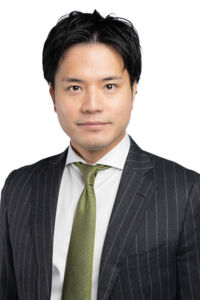This article is sponsored by Neuberger Berman
While Japanese business owners and management teams are warming to private equity overtures, the nation’s institutional investors are also looking increasingly favourably at the asset class. As they navigate this evolving landscape, gatekeepers like Neuberger Berman are playing a key role in helping them access opportunities and manage complexity. Half the Japanese LPs surveyed for a recent Coalition Greenwich study had increased their private equity allocations in the previous three years, while no respondents had reduced them.
So, where are these increased allocations heading? And how are Japanese LPs gaining access to new investment opportunities while also managing the complexity that comes with exposure to a range of strategies? We spoke to Neuberger Berman’s Jonathan Shofet, managing director, global head of private investment portfolios and co-investments, and Yoshi Yagisawa, managing director, head of private markets Japan coverage, to find out.
As appetite for private equity increases among Japanese institutional investors, how are their programmes developing?
 Yoshi Yagisawa
Yoshi Yagisawa
Yoshi Yagisawa: Institutional investors in Japan have continued to build out their private equity exposure, which means they face increasing complexity – there are more funds in their portfolios, there are more funds in the market to choose from, and an increasing number of GPs are completing continuation vehicle deals. Many are also looking to access more small and mid-market buyout funds internationally, or to find promising emerging managers, which can be difficult to identify and then evaluate.
So, while many Japanese LPs, notably large financial institutions, used to complete primary investments in-house, many are now turning to gatekeepers to help with portfolio construction and the operational aspects of managing a programme.
Gatekeepers can improve efficiency in portfolio administration, such as cash management and reporting; streamline legal negotiations with GPs, such as side letter terms; gather information to make investment decisions; and gain access to some of the harder to find opportunities, including small and mid-market funds.
For some Japanese LPs, that means using gatekeepers for parts of their portfolio almost as an extension of their staff, while for others it means using them for their whole private equity allocation. Increasingly, regional banks have also been leveraging gatekeepers to expand their private equity exposure.
This trend has been especially pronounced for Japanese customised separate account programmes. Over the past seven to eight years, we have seen a significant increase in large, sophisticated Japanese institutions utilising gatekeepers for their portfolio construction and decision-making processes. However, these partnerships require the ability to be deeply bespoke and collaborative.
For example, Neuberger Berman established a ‘Japan Desk’ within the private markets investment team at its New York headquarters over 10 years ago. The team currently consists of seven professionals who all speak Japanese and understand Japanese business customs.
The team partners with clients to offer highly customised services in both portfolio construction and operational aspects of programme management, such as working hand in hand with investment team members globally and lending operational support with access to middle-back office professionals, including finance and legal teams, and our client coverage team in Japan.
Beyond the complexities of managing larger and more diverse portfolios, what other challenges do Japanese investors face when managing their PE portfolios?
 Jonathan Shofet
Jonathan Shofet
Jonathan Shofet: Japanese institutional investors are facing similar macro trends as their global peers, including the impact from a lack of liquidity within the asset class. For background, over a long period of time PE investors had become accustomed to a certain level of annual distributions from their PE portfolios (~[20-30] percent of NAV per year), which informed their new commitment pacing models. However, with higher interest rates and lower M&A activity since 2022, annual distributions as a percentage of NAV have fallen to ~13 percent, according to NBAA Analysis as of August 2024.
This has created challenges for certain institutions that were more dependent on distributions. However, it has also created material new investment opportunities for those with capital to invest. Specifically, fundraising today takes materially longer than in previous years, which leads to enhanced LP access to top funds, more time to conduct due diligence and attractive funded primary opportunities.
In addition, the lack of liquidity has led to highly attractive mid-life co-investment and GP-led continuation vehicle opportunities, where the GP is motivated to provide liquidity to their LPs, but wants to continue to own the majority of the business. Exit volumes are increasing, but it will likely remain a slow process. In the meantime, there are abundant attractive opportunities that continue to be created by the current dynamic of muted liquidity.
YY: One of the notable recent trends among major institutional investors in Japan has been the expansion of the investment scope of separate account programmes, which were traditionally focused on primaries, but they may now include co-investments and secondaries investments, including GP-led secondaries.
The goals of this shift include improving portfolio returns and enhancing capital efficiency. For co-investments, they can invest in the opportunities with better economics because co-investors rarely pay management fees and carry to the underlying lead GP. Additionally, there is a focus on getting more insights into underlying deals and GPs.
Partnering with gatekeepers like NB is particularly valuable in this context. Our sourcing capabilities allow LPs to access high-quality co-investment dealflow such as mid-life co-investments and secondaries opportunities, including GP-leds, while the platform helps mitigate challenges such as decision-making timelines that may not align with a Japanese investor’s processes.
Even as Japanese investors are looking internationally, the domestic market is growing rapidly. What are the key trends here?
JS: The Japan private equity market is attractive, not only to domestic investors, but also increasingly to international investors. Many companies, especially those in the lower mid- and mid-market, are facing succession issues, and PE firms are well positioned to acquire, professionalise and operationally enhance those businesses. This has been a mainstay for Japanese PE and we expect that to continue.
There is also an increasing opportunity for take-privates and carve-outs given pressure on public companies to optimise capital structures and improve return on equity. Correspondingly, on the GP side, there are numerous established, high-quality local firms with strong track records that are well positioned to invest and drive value.
This dynamic is meaningfully enhanced by reasonable entry prices in Japan and low debt capital financing costs, relative to both the US and Europe. Together, these factors mean Japan’s private equity market will continue to expand and attract a growing influx of global capital.
How has increased interest in Japan among international GPs affected local investor processes?
YY: In recent years, there has been a surge in GP visits to Japan due to growing interest in the region both in terms of fundraising and investing, and there are increasing cases where end investors directly interact with GPs. However, as mentioned earlier, the use of gatekeepers by major institutional investors remains the mainstream approach in Japan. As a result, it is considered effective for GPs to engage with both end investors and gatekeepers.
Recently, there has been a growing number of cases where investors request NB’s opinions on individual funds and GPs, and active exchanges of views are often valued by investors. For investors that require communication in Japanese, our ‘Japan Desk’ frequently acts as a bridge to provide detailed and relevant information.
What future developments do you expect to see in Japanese investors’ private equity programmes?
YY: We are seeing appetite for emerging manager programmes develop among the large and more sophisticated Japanese investors. Historically, the large investors, such as major financial institutions, had a relatively conservative approach and avoided investing in first-time funds. That is changing as they are now looking to identify future top-performing managers. They are looking to partner with gatekeepers that are deeply entrenched in the ecosystem and that can find and underwrite these GPs.
As private equity investments by Japanese institutional investors continue to grow, the trend of collaborating with gatekeepers is expected to persist. As I mentioned, this is driven by operational needs as well as investment-
related needs. Further, the incorporation of co-investments and secondaries investments is expected to accelerate.
JS: Our institutional clients in Japan are sophisticated and continue to broaden their private markets portfolios in terms of investment strategy, asset class and geography. Over the years, numerous Japanese investors have moved from solely primary portfolios to portfolios that incorporate co-investments and secondaries to seek to optimise returns, lower fees and enhance capital efficiency. In addition, many of those same clients are expanding beyond PE to infrastructure and credit.
We believe Japanese institutions will likely continue to look to gatekeepers to extend the capacity of their in-house teams and allow them to access those investment opportunities in a resource-efficient manner.
Japan has been held up as a market with promise for some time. To what extent has it now reached an inflexion point?
YY: There are several tailwinds that we believe will carry the Japanese private equity market forward. The Japanese government has pushed for improved corporate governance, encouraging companies to focus on shareholder value. This has led large conglomerates to divest non-core assets, creating acquisition opportunities for private equity firms. Also, shareholder activism has reached unprecedented levels, prompting unsolicited takeover bids and significant corporate reforms.
As Jonathan highlights, ageing business owners and succession planning are also serious issues among small and mid-sized companies. Private equity firms can provide a solution by professionalising these businesses, ensuring continuity.
There has also been a big shift in the way that private equity is perceived in Japan. Traditionally, private equity was viewed with scepticism, but companies now see the industry as a strategic partner rather than a short-term profiteer, facilitating dealflow.


AloJapan.com